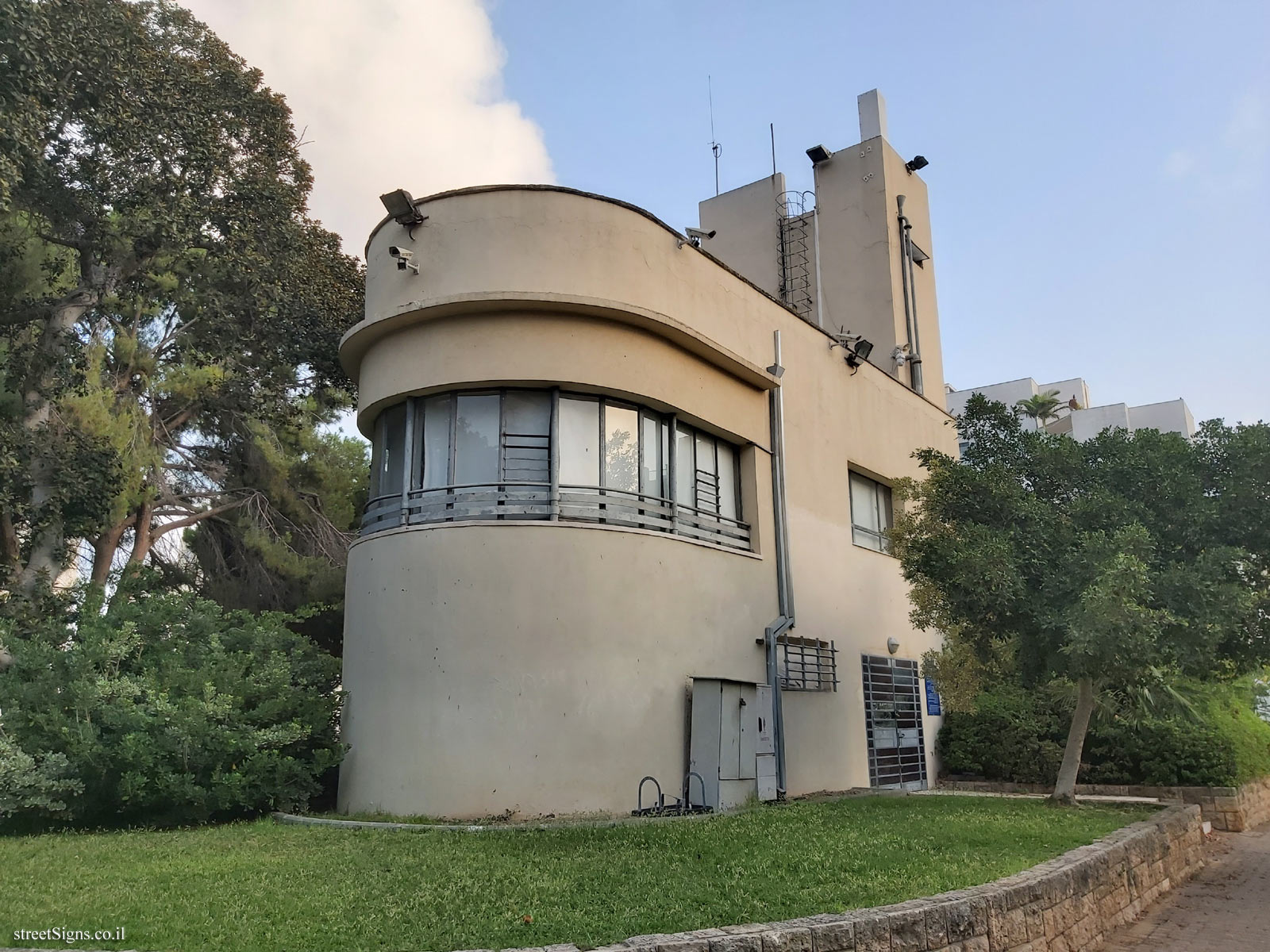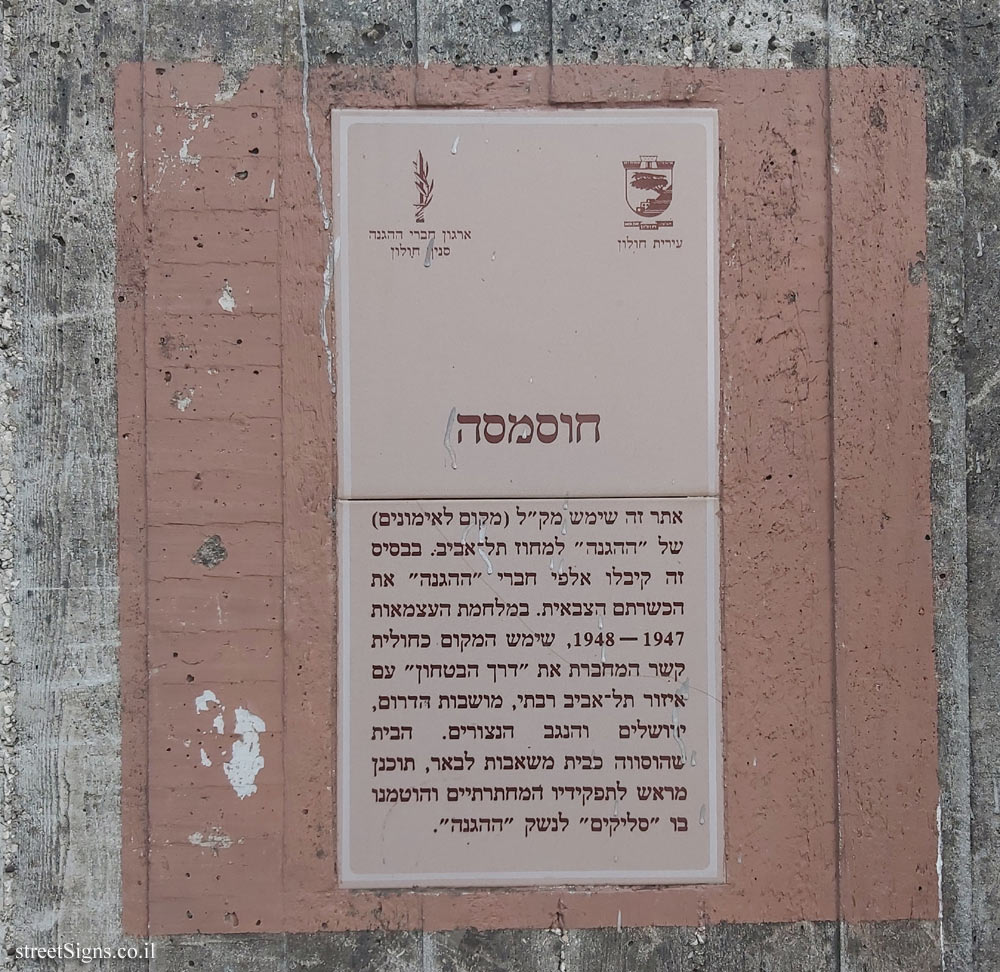The sign shape is square but its head is designed according to the silhouette of the old building of the Gymnasia Herzliya, which serves as a logo of the Council for the Preservation of Heritage Sites in Israel
The building was photographed that day
 Click for a larger image
Click for a larger image  Click for a larger image
Click for a larger image There is also a sign on behalf of the city of Holon and the organization of members of the "Hagana" - Holon branch
 Click for sign's details Translation of the text on the sign
Click for sign's details Translation of the text on the sign:
Symbol of the Council for the Preservation of Israeli Heritage Sites
Holon city emblem
The symbol of the Hagana organization
Emblem of the Hosmasa Museum - Yad LaHagana
Hosmasa - Yad LaHagana Museum Hossmas (Arabic) is hamra soil covered with migrating sands and makes up the soil of the area.
Remains of an ancient settlement from the Persian, Hellenistic and Byzantine periods were found at the site (43 m above sea level).
In the 1930s the land of the area and the water well were purchased by the Bank for Agriculture and Development ("Agrobank"). The well was deepened, connected to an engine, and supplied water to the first Holon neighborhoods.
The building was erected by the engineer Sania Sirkin in 1934 and is considered one of the most unique international style houses ("the Bauhaus") in the country. The garden and orchard next to the building were planted by the garden architect Yechiel Segal.
Due to the fact that the place is far from the watchful eye of the British, the Haganah organization has turned Hosmasa into a central training base for its members in the Tel Aviv area. Slicks were hidden in the house and in its vicinity to hide weapons, and shooting courses and ranges were held.
Here, too, the ’Davidka’ mortar made at the neighboring Israel Mikveh was first tested.
During the War of Independence (1948) the tower served as an observation post. From it they communicated (with Morse code and flags) with the other positions in space. In those days, Hossamsa was an important stop on the security road, which left Tel Aviv for besieged Jerusalem and the Negev settlements.

 Click for a larger image
Click for a larger image  Click for a larger image
Click for a larger image  Click for sign's details
Click for sign's details